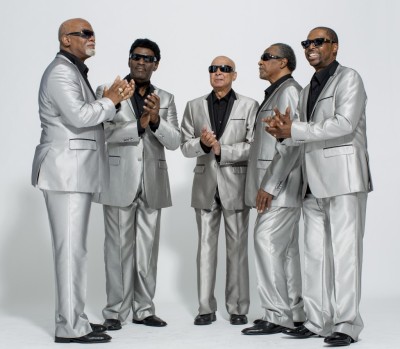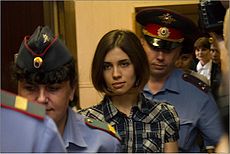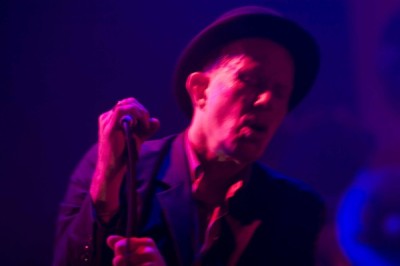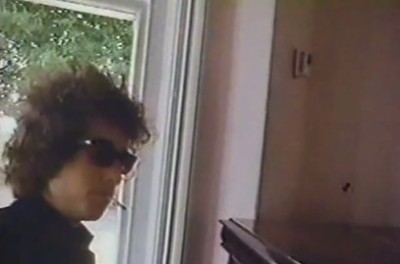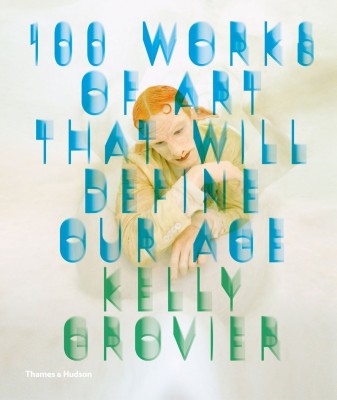This is very groovy track from London’s The History Of Apple Pie. I missed their debut album, Out of View, but they’ve got a second album due next year and will tour the U.S. in October.
Monthly Archives: September 2013
Listen: Stream Justin Vernon Produced Blind Boys Of Alabama Album
The Blind Boys of Alabama have made a beautiful new album, I’ll Find a Way, with the help of Bon Iver/Volcano Choir frontman Justin Vernon. This is a classic gospel album, but with some very hip guests including Shara Worden of My Brightest Star, Patty Griffin and Merrill Garbus of tUnE-yArDs. Vernon himself joins the group on “Every Grain of Sand.”
I’ll Find a Way tracklist:
1. God Put A Rainbow In The Cloud
2. I’ll Find A Way (To Carry It All) (featuring Shara Worden of My Brightest Diamond)
3. I Am Not Waiting Anymore (featuring Sam Amidon)
4. I Shall Not Be Moved
5. Take Me To The Water
6. I’ve Been Searching (featuring Merrill Garbus of tUnE-yArDs)
7. There Will Never Be Any Peace (Until God Is Seated At The Conference Table) (featuring Casey Dienel of White Hinterland)
8. Take your Burden To The Lord And Leave It There
9. Every Grain Of Sand (featuring Justin Vernon of Bon Iver)
10. My God Is Real
11. Jubilee (featuring Patty Griffin)
Much thanks to the Wall Street Journal.
Jailed Pussy Riot Member Starts Hunger Strike
Pussy Riot member Nadezhda Tolokonnikova has announced that she has begun a hunger strike to protest “slavery-like conditions” at the prison camp in the remote Russian region of Mordovia where she is incarcerated, the New York Times reports.
In the letter, which was published on the Lenta.ru news service, Tolokonnikova described beatings of inmates by other inmates on the face or kidneys. She said that she has not been beaten but wrote that they “never happen without the knowledge and sanction of the prison authorities.”
She wrote that the prisoners in her sewing division must work 16 or 17 hours a day. “In the best case scenario we get four hours of sleep per night,” she wrote. “We get a day off once every six weeks. Almost all Sundays are work days. Prisoners are forced to write requests to work on weekends saying it is their own voluntary decision.”
Explaining her motivation for the hunger strike, she wrote, “I refuse to participate in slave labor at the camp until the penal colony authorities begin to work under the law and treat women inmates as people rather than cattle.”
For more on this story, go to the New York Times or The Guardian.
Listen: Stream Melt-Banana’s Noise-Punk Extravaganza “fetch”
After a six year break, noise-punk weirdos Melt-Banana — vocalist Yako and guitarist Agata — have delivered a new work of exquisite pain, fetch. The 2011 Tohoku earthquake meltdown at Fukushima Daiichi Nuclear Power Plant had a tremendous impact on Melt-Banana, Yako told Spin magazine.
“It is hard to explain exactly how it affected me and what has been changed, but it affected me on a very deep level,” she said.
“I could not concentrate on writing music for some time for reasons I couldn’t explain,” Agata said.
fetch will be released on Oct. 1 but you can hear the whole thing now over at Spin.
Watch: Nirvana Rehearsal Videos From 1993
Rehearsal footage from MTV’s “Live and Loud.”
Get More:
Nirvana, Very Ape (Live), Music, More Music Videos
Get More:
Nirvana, Radio Friendly Unit Shifter (Live), Music, More Music Videos
Previously unheard Nirvana song:
Film: Michael Bloomfield Documentary Finally To See The Light
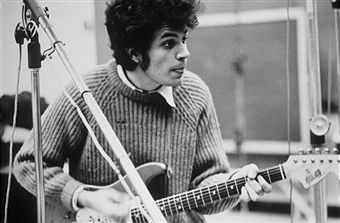
A years in the making documentary on the great blues guitarist Michael Bloomfield, “Sweet Blues: A Film About Michael Bloomfield,” will be premiered at the Mill Valley Film Festival in Mill Valley, CA, on October 11. Filmmaker Bob Sarles spent 25 years working on the documentary.
A taste of Bloomfield’s inimitable playing:
Bloomfield first came to national attention as a member of the Paul Butterfield Blues Band, a favorite of the counter-culture rock crowd
in the late ’60s. As a session guitarist he played on Bob Dylan’s album, Highway 61 Revisited, including Dylan’s Top 40 hit, “Like A Rolling Stone,” and was the lead guitarist in the band Dylan used at his infamous Newport Folk Festival performance, which was the first rock ‘n’ roll performance of Dylan’s professional career.
To introduce Bloomfield on November 15, 1980, when the guitarist joined Dylan for a performance of “Like A Rolling Stone” at the Warfield Theater in San Francisco, Dylan talked about meeting Bloomfield for the first time: “I was playing in a club in Chicago, I guess it was about 1956, or nineteen-sixty. And I was sittin’ there, I was sittin’ in a restaurant, I think it was, probably across the street, or maybe it was even part of the club, I’m not sure — but a guy came down and said that he played guitar. So he had his guitar with him, and he begin to play, I said, ‘Well what can you play?’ and he played all kinds of things, I don’t know if you’ve heard of a man, does Big Bill Broonzy ring a bell? Or, ah, Sonny Boy Williamson, that type of thing? He just played circles, around anything I could play, and I always remembered that.” (Thank you Greil Marcus, for including Dylan’s introduction in your book, “Like A Rolling Stone: Bob Dylan At The Crossroads”.)
So Dylan hired a great blues guitarist for the Highway 61 Revisited sessions, but he was intent on making his first full-bore rock album, so Dylan gave Bloomfield cryptic instructions before the sessions began.
“I went to his house first to hear the tunes,” Bloomfield said in a June 1968 interview for Hit Parader. “The first thing I heard was ‘Like a Rolling Stone.’ He wanted me to get the concept of it, how to play it. I figured he wanted blues, string bending, because that’s what I do. He said, ‘Hey, man, I don’t want any of that B. B. King stuff.’ So, OK, I really fell apart. What the heck does he want? We messed around with the song. I played the way that he dug and he said it was groovy.
“Then we went to the session,” Bloomfield continued. “Bob told me, ‘You talk to the musicians, man, I don’t want to tell them anything.’ So we get to the session. I didn’t know anything about it. All these studio cats are standing around. I come in like a dumb punk with my guitar over my back, no case, and I’m telling people about this and that, and this is the arrangement, and do this on the bridge. These are like the heaviest studio musicians in New York. They looked at me like I was crazy.”
Bloomfield and his band, The Electric Flag, at the Monterey Pop Festival in 1967:
Bloomfield’s biggest success came with the release of Super Session, a jam with Steven Stills and Al Kooper that reached #12 on the Billboard Top 200 in 1968, the year of its release.
Bloomfield is considered one rock’s greatest guitar players; he was ranked #22 in Rolling Stone’s “100 Greatest Guitarists Of All TIme.”
Bloomfield became addicted to heroin, and in the early ’70s, maintained a low profile, spending much of his time at his house in Mill Valley, CA. As a teenager, a friend and I knocked on Bloomfield’s front door one afternoon. He opened the door, and when we told him we were big fans, he invited us in. That day he spoke to us freely about the blues, as well as his sessions with Dylan. The following year when my friend and I were putting on dance concerts at Tam High in Mill Valley, Bloomfield agreed to play, and with a pickup band headlined the show at the high school auditorium and delivered what I remember as a knock-out performance.
For the rest of his life, Bloomfield played occasional club dates around the Bay Area, sometimes with the exceptional blues pianist Sunnyland Slim, including a terrific set I caught at the Opal Cliffs Inn in Santa Cruz. He was found dead of a drug overdose on February 15, 1981. He was 37 years old.
In the documentary, Sarles includes interviews with numerous people who knew Bloomfield including guitarist Carlos Santana, harmonica ace Charlie Musslewhite, singer/songwriter Country Joe McDonald, guitarist Elvin Bishop, B.B King, Al Kooper and many more.
Bluesman Charlie Musslewhite talks about Bloomfield in the film:
Concert promoter Bill Graham on Bloomfield:
Watch: Farm Aid Crowd Bums Out Neil Young

If you saw Neil Young’s Farm Aid performance today (Saturday Sept 21, 2013) at the Saratoga Performing Arts Center in Saratoga Springs, New York, you saw a superstar lose his cool as he tried repeatedly to talk serious to the audience about the domination of farming by corporations, about the connection between factory farming and climate change and, finally, about the suicides of Kurt Cobain and Phil Ochs.
Young opened his 40-minute acoustic set with a spirited performance of Bob Dylan’s “Blowin’ In The Wind.”
His set was dominated by cover versions, as if the recent release of Bob Dylan’s Another Self Portrait had inspired Young: Gordon Lightfoot’s “Early Morning Rain” (included on the original Self Portrait), Ivory Joe Hunter’s “Since I Met You Baby” (played on upright piano), Tim Hardin’s “Reason To Believe (played on pump organ) and Phil Ochs’ “Changes.” Young interspersed just two intense performances of his original songs among the covers: “Old Man” and “Heart of Gold.”
“Early Morning Rain”:
“Old Man”:
“Heart Of Gold”:
“Since I Met You Baby”:
The music was great, but Young was intent on delivering a message beyond the music. “The Farmers are on the front line of climate change…,” Young told the audience. “All that carbon that’s up in the sky. And believe me, this has a lot to do with what’s going on with all these radical weather patterns we’re seeing. It’s real. All the carbon that’s up in the sky, it used to be down here. Used to be in the ground. Used to be in the soil. Used to be down here under the crops. And then Monsanto and all the big chemical companies nnd the industrialists, they came and made factory farms and replaced family farms and they brought in the chemicals, made it so [family farms] couldn’t grow without chemicals. And the farmer, the little guys, tried to get a loan from the bank and the bank said. ‘We’ll give you a loan but you have to use these chemicals, what we tell you to use, or we won’t give you a loan.’
“That’s the truth,” he continued. “That’s what we’re living right now. Those chemicals have made it so we’ve lost sometimes more than half our topsoil. And it didn’t just disappear; it’s up there. We need to bring it down to earth…”
Some of the audience weren’t buying it, and just wanted more music. Young became agitated, and started talking some more about climate change.
“Colorado could be coming down the highway towards Albany right now,” Young said, referring to the recent storm in Colorado that caused nearly $2 million in property damage. “If you don’t believe me, you’re in denial. Wait a couple of months. We’ve seen it. We’ve seen it down in New Jersey. You saw it in New York, saw it in New Orleans, saw it up in Canada, saw it in Toronto, saw it in Calgary, in the Midwest. It just keeps moving around like a ghost. We got to stop it…”
He sat down at his pump organ, started to play “Reason To Believe,” but he just couldn’t do it. It was like he was compelled to keep talking about what he felt was the point of the Farm Aid benefit concerts. So he got up and said to the crowd, “I’m not done. I don’t care. Somebody’s got to say something. Somebody’s got to say something. Don’t you want freedom of choice. Wouldn’t you like to burn something clean instead of something dirty? I would. A lot of people don’t believe it. Oh we got to have big oil, he’s out of his mind. I may be out of my mind but we still don’t need it. We got farmers we got the earth we got the sun we got the land. Let’s give it a chance.”
What followed was a funeral slow rendition of the Tim Hardin classic.
“Reason Of Believe”:
And then Young was talking again. “Life is short folks,” he said. “We all know that. There’s no time like right now. I was talking back stage with Pete [Seeger] before he came out here and he told me a tale about this friend of his. We lost this friend a long time ago ‘cause life is short. He killed himself. And Pete talked to him a few days before that happened and Pete said, ‘I wish I’d done something more to stop that from happening.’ I said, ‘Well don’t worry about that, there’s nothing you can do about it. Because that kind of thing happens all the time.’ It happened to me. I had a friend [Cobain], who was a singer and he was great. And he reached out to me and I tried to get back to him through his office. I tried for days and days and finally I gave up. Couple of days later he blew his head off. So life is short and you can regret things…
And that’s when someone in the ground yelled out “Come on, let’s go,” and Young freaked.
“Come on let’s go?” he said. “Did I hear ‘come on lets go?’ I’m on my way buddy. I work for me. So you know I’m trying to make a little point here. But this guy that Pete knew, he was one of the greatest poets that ever lived. He wrote this next song that some of you have probably never heard and it’s long as hell. I don’t know what to tell you… One of the greatest songwriters that ever lived. Phil Ochs was his name…”
And then Young ended his set with a beautiful performance of Phil Ochs’ “Changes.”
Watch Saturday’s Live Aid performances, including Young’s entire set.
Live: Tom Waits To Play Bridge Benefit
Tom Waits has just been added to the Bridge School benefit show lineup. He’ll perform a full acoustic set featuring songs from his album, Bad As Me, with his band (David Hidalgo guitar; Les Claypool bass; Casey Waits, drums; and more).
Waits hasn’t toured since 2008, and according to his website, has no plans to tour.
“I had every good intention to stay home and work on my JD Salinger Halloween mask,” Waits said in a statement, “but when Neil told me yesterday he was serving burnt cow’s eyes on a flat tire and it’s all gluten free, I invited myself!”
The 27th annual Bridge School Benefit Concert will be held on October 26 and 27 at the Shoreline Amphitheater in Mountain View, CA. Also appearing: CSNY, Queens of the Stone Age, My Morning Jacket, The Killers (Saturday only), Elvis Costello, Diana Krall, fun., Heart and Jenny Lewis.
Watch: Bob Dylan’s ‘Eat The Document’
“Eat The Document” is the color documentary Bob Dylan hired D.A. Pennebaker (who also made the black and white Dylan documentary “Don’t Look Back”) to shoot of the artist’s 1966 tour of the United Kingdom.
Dylan was backed by The Hawks, who in a few years would rename themselves The Band. This arty film includes a bit with a very stoned Dylan and not-quite-so-stoned John Lennon joking in the back seat of a car.
Of more lasting interest are Dylan and Robbie Robertson in a hotel room developing a beautiful song, never released, “I Can’t Leave Her Behind,” which Stephen Malkmus covered for the “I’m Not There” soundtrack. There’s also a cool scene of Dylan and Johnny Cash dueting on “I Still Miss Someone.” And great live footage of Dylan and The Hawks.
Books: ‘100 Works Of Art That Will Define Our Age’
Expat Kelly Grovier, who contributes to the Times Literary Supplement, has attempted in this book to predict the future — not as risky as it might seem at first, since neither us nor Grovier are likely to be around by the time it’s possible to judge the success or failure of his endeavor.
“We lack the necessary perspective when it comes to judging what it is about our time that is most important or representative culture-wise, for which reason the work of drawing up grand lists – the creation of a canon of the moment – is best left to those who come after,” Rachel Cooke writes in a review published today (Sept. 21, 2013) in The Guardian. “The art world, moreover, moves so fast these days that such a volume will doubtless seem out of date even before it makes it to paperback (the earliest piece included is Marc Quinn’ Self, from 1991; the most recent is Ai Weiwei’s Sunflower Seeds from 2010).”
For the rest of this review head to The Guardian.

